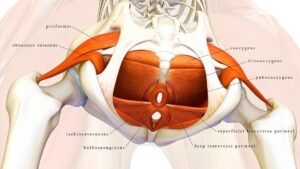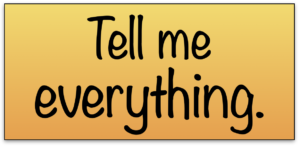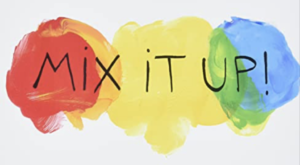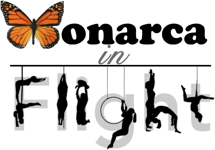February 2022 Newsletter
Welcome to Monarca in Flight’s newsletter! We’ll pop into your inbox periodically to keep you in the loop with what’s happening around the studio, along with a few tidbits from our staff to help you along your aerial journey – or maybe just bring a smile to your face. Have an idea or burning question for our next newsletter? Email us!
Werk, Werk, Werkshop Time!
 Thomas Martin is a local aerialist who specializes in fabric, dance trapeze, and chain loops. He’s been a big hit at previous C4 weekends and other workshops, so we’re thrilled to welcome him back for three workshops on Sunday, February 20, beginning at 10 am! Check him out on Insta as @tmcirque or live at SAX Dinner Theater & Lounge in DC.
Thomas Martin is a local aerialist who specializes in fabric, dance trapeze, and chain loops. He’s been a big hit at previous C4 weekends and other workshops, so we’re thrilled to welcome him back for three workshops on Sunday, February 20, beginning at 10 am! Check him out on Insta as @tmcirque or live at SAX Dinner Theater & Lounge in DC.
Workshops include “Pop It, Flip It, and Reverse It,” for dance trapeze (some experience required), “Twist Right Round” for lyra (all levels), and “The Power of Loops” for strappy (double) loops (no experience required). Sign up now!
Splitz and Shizzle
 Did you know that lengthening, or relaxing, the pelvic floor muscles helps open the hips and could help ease you into deeper splits and backbends, especially if you are a chronic clencher? Many times, particularly woman after childbirth, are encouraged to practice Kegels and to contract the pelvic floor more, but if we don’t learn to relax them effectively, we are unable to recruit them when we really need them.
Did you know that lengthening, or relaxing, the pelvic floor muscles helps open the hips and could help ease you into deeper splits and backbends, especially if you are a chronic clencher? Many times, particularly woman after childbirth, are encouraged to practice Kegels and to contract the pelvic floor more, but if we don’t learn to relax them effectively, we are unable to recruit them when we really need them.
The most common issue pelvic floor physical therapists see in active people like aerialists, dancers, and gymnasts is the inability to effectively relax the pelvic floor. The deep pelvic floor muscles act as a hammock from front to back (pubic bone to tailbone) and side to side (hip to hip). Can you think of positions where you would want your hips to spread wider apart side to side? What happens to your hips when you untuck your tailbone? Can you think of moments when one side is lengthening and the other side is shortening? These are moments to bring awareness to that area of your body and to play with the sensation of length and the sensation of “just enough” tension to still hold pelvic stability. I liken it to the aerial conditioning drill of dead hangs: have you ever noticed that if you death grip the apparatus, your hands get tired faster? But if you hold with “just enough” tension to keep yourself up, you will last a whole lot longer?
And guess what? People with penises have (nearly) the same pelvic floor muscles and the same ideas apply!
If you want to learn more about your pelvic floor, I highly suggest going to see a pelvic floor PT! If you want to learn more about how it pertains specifically to flexibility, come join me in Sundae Splits and Backbends 101!
-Cyndi Gadhia
Suffering from a case of the Mondays? Stop by for a quick break over your lunch hour! Airin teaches an hour-long Aerial Yoga class starting at noon every Monday – it’s a perfect pick-me-up to send you back on your way feeling refreshed!
Tell Me Everything: Open Studio
 Open Studio is a great time to practice and refine what your are learning in class, and at Monarca we have three weekly options: Wednesdays and Fridays from 12:30-2 and most Sundays from 12-3. Any student can participate after they have completed a Level 1 class or passed an evaluation. You may bring your own equipment, but it’s not required. Here are some simple guidelines and suggestions to make your training fun and effective:
Open Studio is a great time to practice and refine what your are learning in class, and at Monarca we have three weekly options: Wednesdays and Fridays from 12:30-2 and most Sundays from 12-3. Any student can participate after they have completed a Level 1 class or passed an evaluation. You may bring your own equipment, but it’s not required. Here are some simple guidelines and suggestions to make your training fun and effective:
Warm up: First, warm up on the ground. Think of moving from larger movements to smaller – ex: jumping jacks to arm circles to shoulder pushups. Or: squats to lunges to kicks… keep it moving, focused and brief, around 10-15 minutes. Get your blood pumping and your mind ready to focus on movement.
Next, warm up on the apparatus: shrugs, front and back balances, climbs, knee hangs, etc. If you need advice on warm up exercises for your apparatus of choice, ask your instructor or reach out to Monarca admin.
Technique drills: Choose a couple “tricks” or “poses” from a recent class and drill, drill, drill! Keep it to 3 or 4 so you don’t get overwhelmed.
Sequences: Take those 3 or 4 poses you just practiced and start to link them. Focus on transitioning between each pose with specificity and awareness – this will help you increase your aerial stamina.
Conditioning: Towards the end of your practice, before you are completely burned out, pick a conditioning exercise or two, and focus on slow and controlled repetitions. For example, if you are a silks student, you could do a timed dead hang. Or, if you are a trapeze or lyra student, work on your back balances to hollow body.
Conditioning at the end of your practice is about being conscious of your technique while your body is tired. So keep it simple, but really focused. When you feel your technique start to waver, then its time to stop.
Cool down: Quite possibly the hardest and most important part of training: taking a few moments at the end to settle your body and brain and cool down. Give yourself at least 5 minutes to give some TLC to a part of your body that feels the most fatigued. ex: shoulders, forearms, pecs… Be mindful of your breath as you stretch and let your nervous system rest.
Take notes: Keep a log book. Tracking your training helps keep you motivated and engaged!
-Gwynne Flanagan
What’s in your bag?
 The main thing I have in my bag is extra padding. There are two sets of things sold as ankle supports or braces, one black and one in cream. They cover my ankle and mid-foot, but leave toes and heels out. I use them for rope and easy days on trapeze. For more serious trapeze time (when I am doing many drops to ankles) I have my beloved trapeze boots made by Isabella Mars. I have three sets of tube compression cotton bandages for covering arms during hip circles, and elbow circles.
The main thing I have in my bag is extra padding. There are two sets of things sold as ankle supports or braces, one black and one in cream. They cover my ankle and mid-foot, but leave toes and heels out. I use them for rope and easy days on trapeze. For more serious trapeze time (when I am doing many drops to ankles) I have my beloved trapeze boots made by Isabella Mars. I have three sets of tube compression cotton bandages for covering arms during hip circles, and elbow circles.
For warm up before class, and possibly some PT exercises I have a couple exercise bands, a peanut, and a lacrosse ball. There is block Metolius climbing chalk (in a single plastic bag) for trapeze, powder resin (double plastic bagged and in a sock) for rope, and Firm Grip spray resin for beats on rope. I have two different kinds of glasses trappers. I carry one or two kinds of notebooks to write down the new moves or technique I have learned. There are a couple small rolls of athletic tape, just in case. To top it off the side pocket has two carry out menus for Pho Golden Star and Crystal Thai, and some backup mask options, two cloth, three surgical, and one KN95.
-Danielle O’Donnol (Trapeze and Lyra instructor)
Rosin vs. Chalk: The Great Debate!
 What are these things, should you be using them, and how can you get your sweaty, sweaty paws on them?
What are these things, should you be using them, and how can you get your sweaty, sweaty paws on them?
What is rosin? Rosin is, essentially, tree sap, and it is used in a variety of applications to make things stickier than they are naturally. It is often used in rock form, crushed up in a sock, but some people prefer to buy or make spray rosin.
Why do people use rosin? Rosin is used in a lot of different ways. Violinists use it on their bows to increase the volume produced by their instruments, and dancers use it on their pointe shoes to increase friction so they can have more control en pointe. Silks and rope artists use it mostly on their hands for climbing or grip, but also behind their knees for achieving a stronger knee hang on silks, or between their toes for toe climbs. It is used by trapeze and lyra artists to improve grip, usually on taped apparatuses.
What is chalk? Gymnastics chalk is commonly made from magnesium carbonate. It does not dissolve in water, and it usually comes in powder or in blocks (that then become powder). It is used to keep things dry.
Why do people use chalk? Chalk is used to prevent sweaty hands by drying your hands out. Weightlifters use it to help with lifting heavy bars. Gymnasts and flying trapeze artists use chalk to hold onto their apparatuses, as do some static/lyra artists. Acro folks or people doing duo work use it to help them hold on to their partners. Handstanders use chalk to prevent their hands from sliding on the floor or on blocks.
Wait, should I be using these things?! I must give you the world’s least helpful answer: It depends.
Grip is highly individual. You can always work to improve the strength of your grip, but your capacity for doing so can be impacted by a lot of different factors. It’s not uncommon for wrist, shoulder, or even neck issues to affect grip strength. The texture of your skin may make it more difficult to grip a silk or a bar, as can the size of your hand relative to the thing you’re trying to grip. Even the climate you’re working out in affects your grip: working out in dry climates is very different from working out in humid climates.
There is little debate on the benefits of chalk for hand to hand or duo work or for handstands. Trapeze and lyra artists will sometimes liberally chalk up a newly taped apparatus to reduce the stickiness of the tape, and chalk use is sometimes required in flying trapeze classes, especially when catching or being caught. Use it when your hands get sweaty and are in danger of sliding. One downside of chalk is that it may show up on dark-colored costumes or clothing. Do not chalk your hands and then adjust your underwear.
Rosin is another story. Some aerialists believe you should never use rosin or that you should use it sparingly and that you should instead just work on your grip strength. This viewpoint is wrong, and also ableist. Insisting that everyone “just” needs to work on grip strength ignores the reality that people’s needs and capacity to build strength can differ greatly.
Rosin and chalk are just tools. If using them makes you feel safer or allows you to do the things you need to do, then you should use them. Just don’t use so much chalk that everything around you is covered in it when you’re done, or so much rosin that you glue yourself to your apparatus.
You may find that your need for rosin changes over time. Some people find they don’t need as much rosin as they gain strength, and some people find they want it more as they start to learn more advanced or difficult skills or a new apparatus. It’s always good to check in with your body once in a while to see where things stand. Just make sure you do so safely.
Do not use hand sanitizer with rosin on your hands, as alcohol-based sanitizers will activate your rosin and glue you to the next thing you touch: door handles, steering wheels, kittens, etc.
I’m allergic to tree sap; can I use rosin? People allergic to tree sap should not use rosin or should at least be careful how much they use, and they may wish to keep exposed skin to a minimum on shared equipment.
There aren’t a lot of grip aid options for people who can’t use rosin. Some people use chalk instead, if they have sweaty hands, while some people use spray bottles to make their hands a little damp to increase friction.
I’m allergic to the chalk used in schools; can I use gymnastics chalk? Gymnastics chalk is not the same as the chalk used in schools, which some people are reportedly allergic to, so you should be fine. When in doubt, ask your allergist. But everyone should probably try to avoid breathing in vast quantities of chalk dust, which can be an irritant in the lungs.
So where can I get my paws on rosin and chalk? Rosin can be purchased through a number of aerial arts and dance stores online, as well as regular sporting goods stores. Check out Capezio’s rock rosin or Rawlings’ rock rosin bags. You can tie your rock rosin in a sock, crush it up, and then keep the sock in a Ziploc baggie. You can also buy spray rosins like Firm Grip or Tuf-Skin online. Firm Grip has a lighter hold than Tuf-Skin, which is basically spray adhesive. Another option is to make your own liquid rosin using rock rosin and 91% isopropyl alcohol. Fill a small container (like the tiny travel containers you can find at any grocery store) with 1/3 rock rosin (crushed up) and 2/3 alcohol and shake until the rosin dissolves.
Gymnastics chalk can be purchased online through gymnastics supply stores. Ten-O sells a chalk ball in a bag for about $10. You can typically buy it either in blocks or in powder form in a sock or a baggie. If it comes in a block, put it in a sock, crush it up, and put it in a Ziploc baggie.
Why do you keep telling me to put things in socks and baggies? Rosin and chalk are messy. It is good etiquette to try to keep rosin and chalk dust contained. When using your own stash of rosin or chalk, place your hand inside the baggie to get what you need – don’t take the sock out of the baggie. Don’t rosin or chalk your hands and then use your hands to push yourself off the floor, or cover your hands in chalk and then start applauding. The owners of the studios you visit will thank you for your courtesy.
-Hilary Eckberg
Mix it up with Monarca
 Join us at the studio on Sunday, March 6, from 3:30-5:30 p.m. for what will hopefully be the first of many student mixers! We’re so excited to be reintroducing social events after these last two years, because Monarca is so much more than “just” a studio – we’re also a community. We hope you’ll come spend some time with your fellow students and maybe get to know your coaches outside of class. Light refreshments will be provided, so you might even get to see people’s entire faces… how exciting! Students only, please (no guests).
Join us at the studio on Sunday, March 6, from 3:30-5:30 p.m. for what will hopefully be the first of many student mixers! We’re so excited to be reintroducing social events after these last two years, because Monarca is so much more than “just” a studio – we’re also a community. We hope you’ll come spend some time with your fellow students and maybe get to know your coaches outside of class. Light refreshments will be provided, so you might even get to see people’s entire faces… how exciting! Students only, please (no guests).
Student Showcase: “Empower and Engage”
Mark your calendars for May 21 – the student showcase is back! This theme was developed by Acoatzin before he passed away and we’re so glad to be able to honor his wishes by using it. We recently selected our cast and we’re so excited to see what they come up with! Keep an eye out for ticket sales as the date approaches – we’ll have two performances on Saturday, May 21 at 2 and 7:30 p.m., but our showcases almost always sell out!
